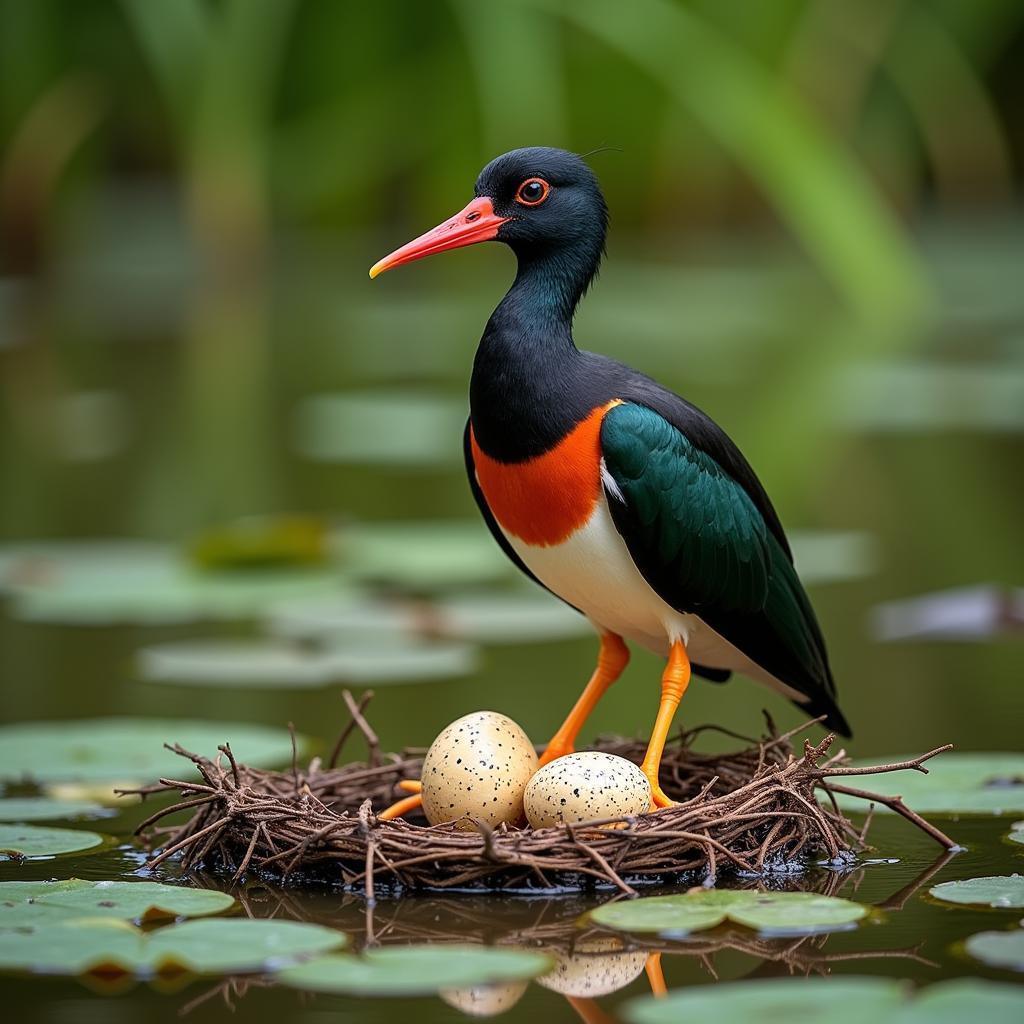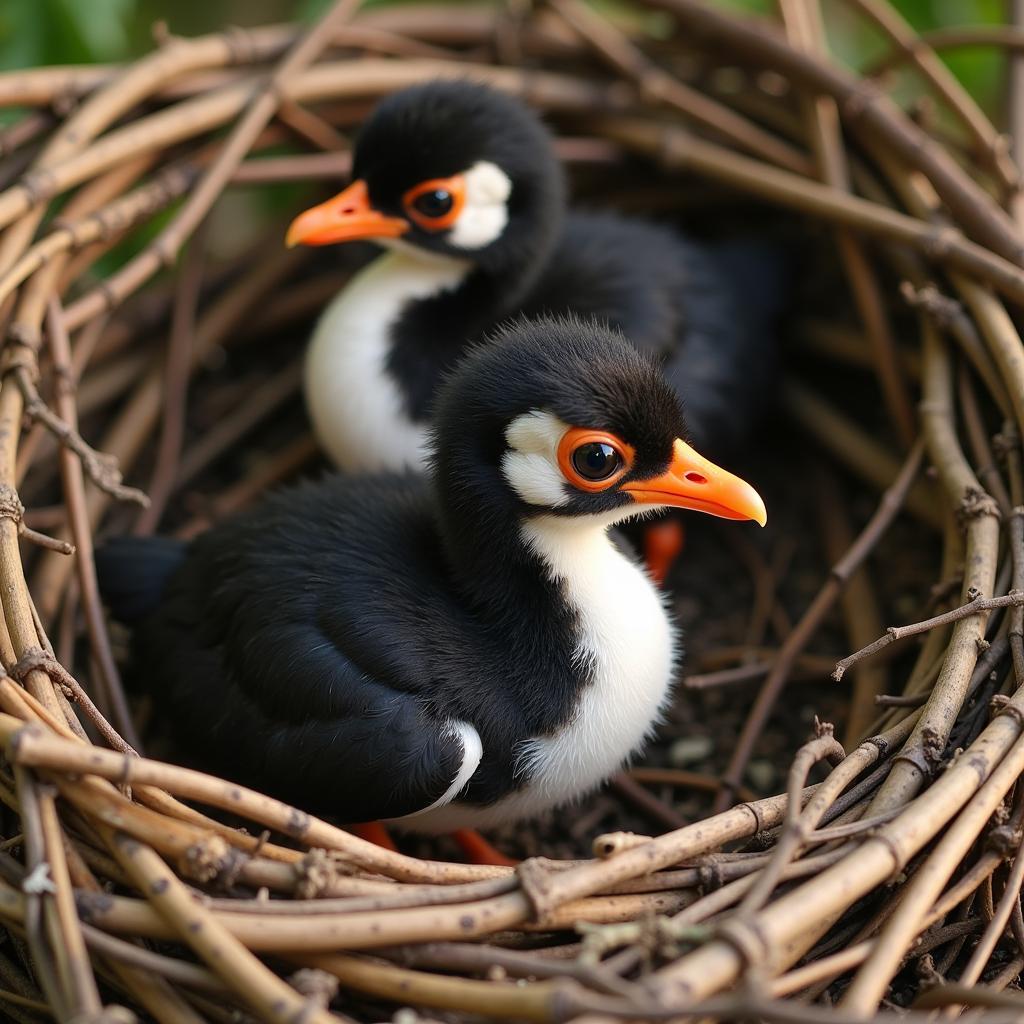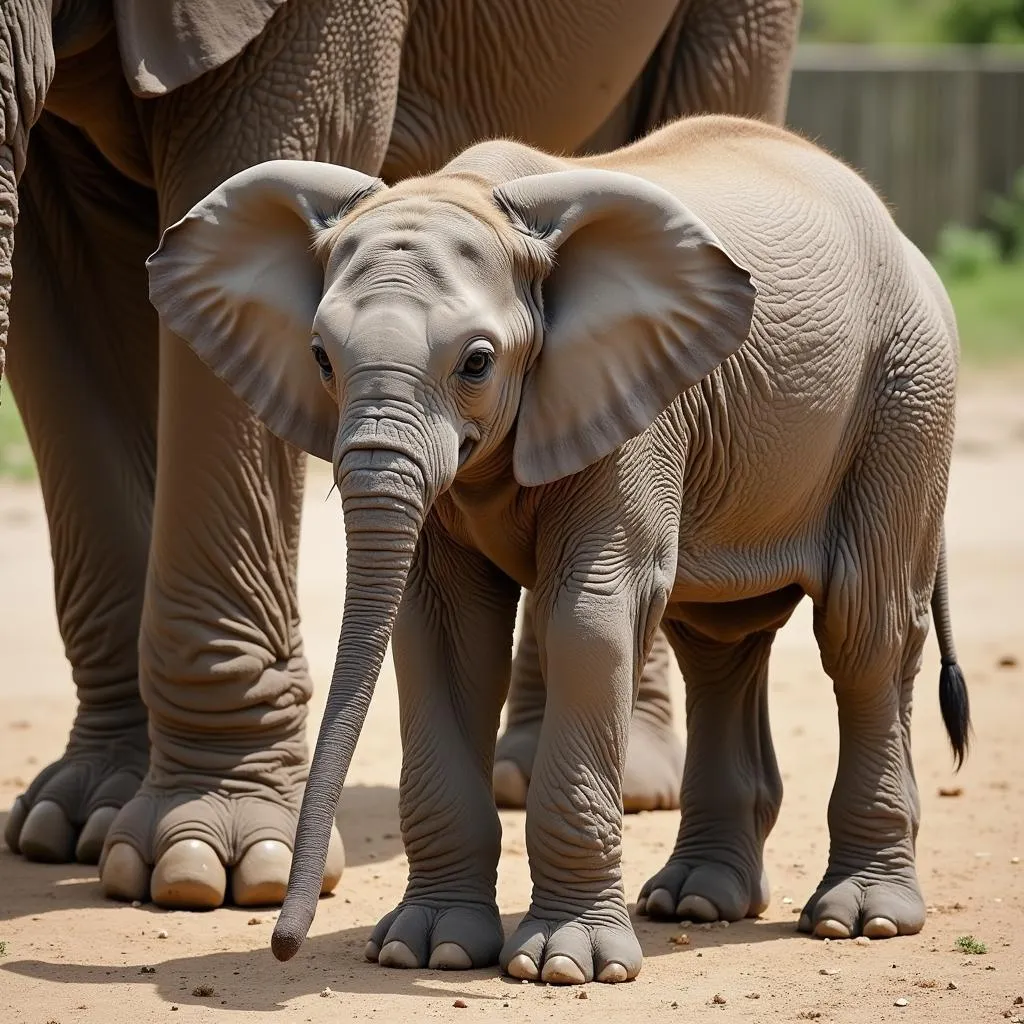African Jacana Nest Pictures: A Glimpse into Unique Nesting Habits
African Jacana Nest Pictures capture a fascinating aspect of avian life in the continent’s wetlands. These striking birds, known for their elongated toes and vibrant plumage, exhibit unique nesting habits that have captivated nature enthusiasts and photographers alike.
The Role Reversal in African Jacana Breeding
Unlike many bird species, African jacanas exhibit a remarkable role reversal when it comes to breeding. The females, larger and more vibrantly colored than their male counterparts, take on the dominant role in courtship and territorial defense. Males, on the other hand, are responsible for the majority of nest building and chick rearing. This unusual dynamic makes African jacanas a particularly intriguing subject for studying avian behavior and adaptation.
 Male African jacana diligently incubating eggs in a floating nest
Male African jacana diligently incubating eggs in a floating nest
Building a Nest Atop Water: A Feat of Engineering
African jacanas construct their nests directly on floating vegetation, showcasing an impressive feat of engineering. These nests, though seemingly precarious, are surprisingly robust. The birds carefully weave together water lilies, reeds, and other aquatic plants to create a platform that is both buoyant and stable enough to support the weight of eggs and chicks.
Camouflage: Nature’s Defense Mechanism
The nests of African jacanas, often built low on the water, are particularly vulnerable to predators. To counter this, the birds rely heavily on camouflage. The eggs themselves are speckled and blend seamlessly with the surrounding vegetation. This natural camouflage, coupled with the nest’s strategic location, provides a crucial layer of protection against potential threats.
 African jacana chicks blending seamlessly with their nest
African jacana chicks blending seamlessly with their nest
African jacana nest pictures offer a glimpse into the remarkable world of these fascinating birds. From their unique breeding roles to their ingenious nest-building techniques, African jacanas continue to captivate those fortunate enough to witness their behavior in the wild.



